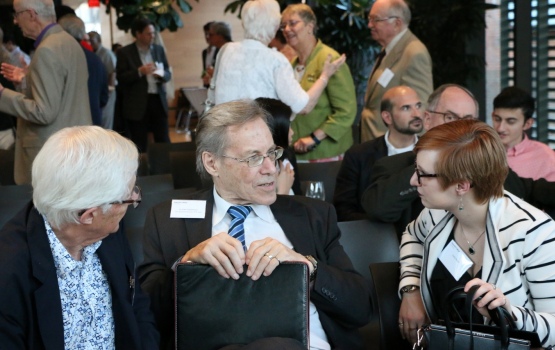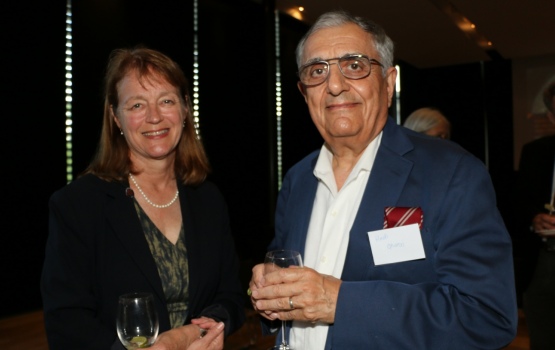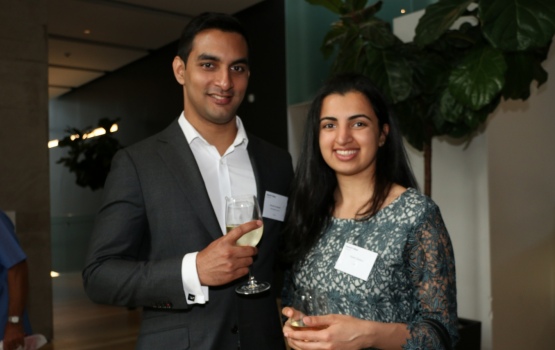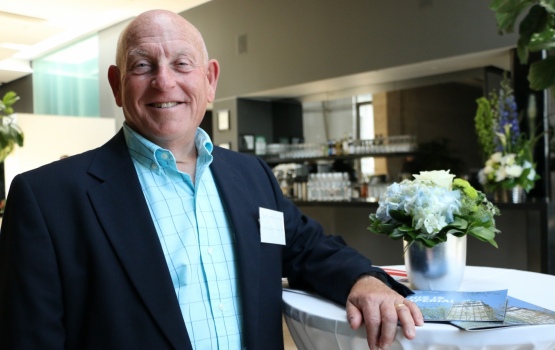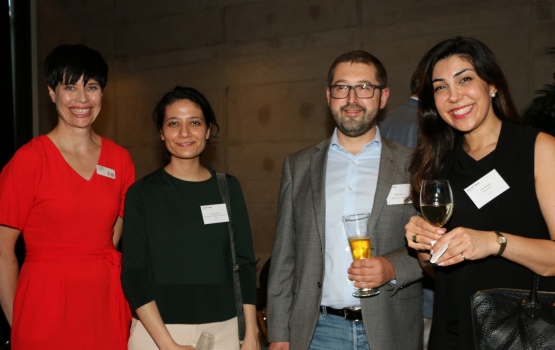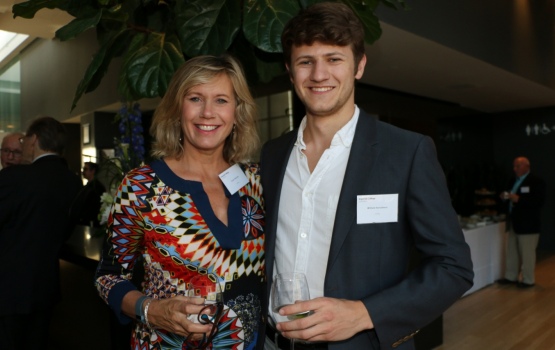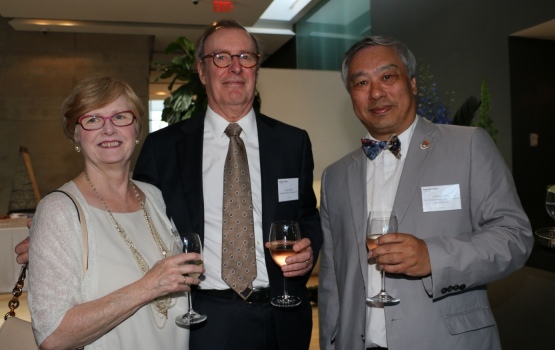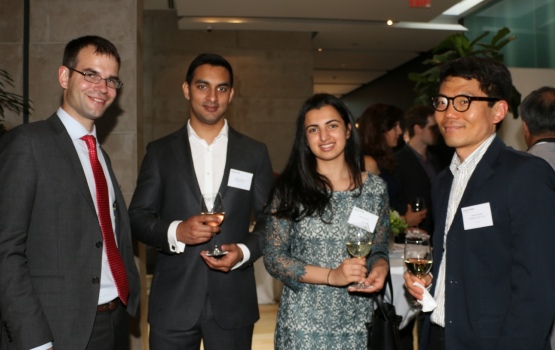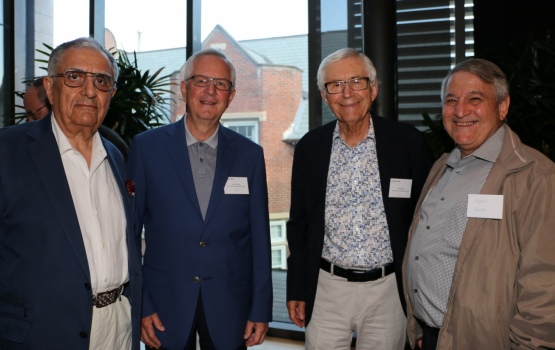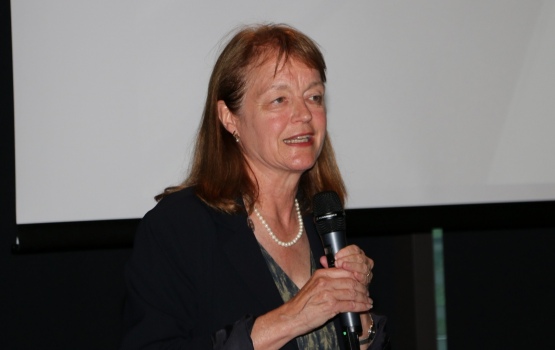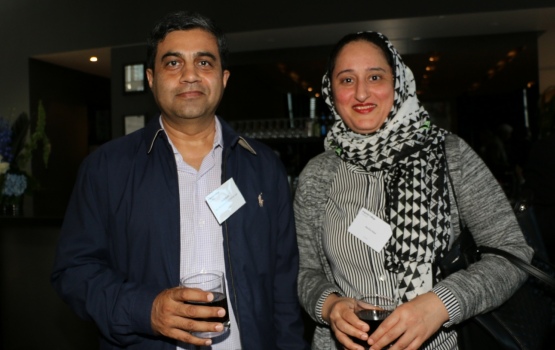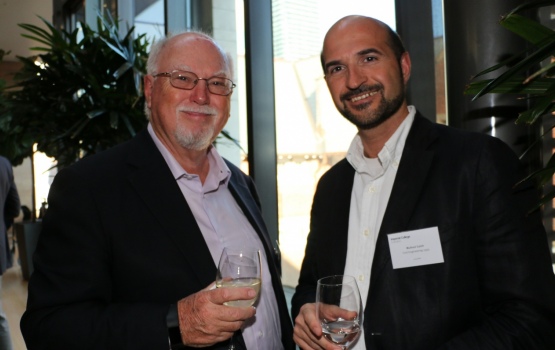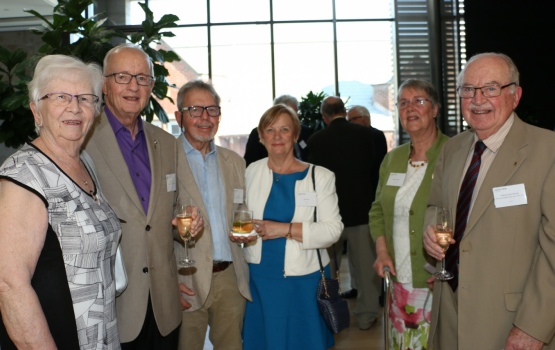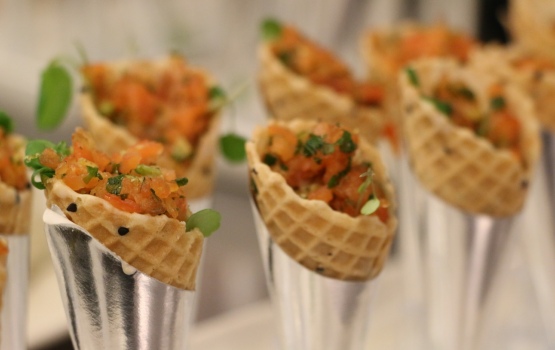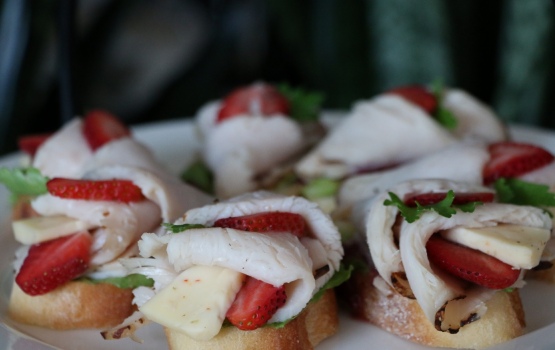Canadian connections celebrated in Toronto
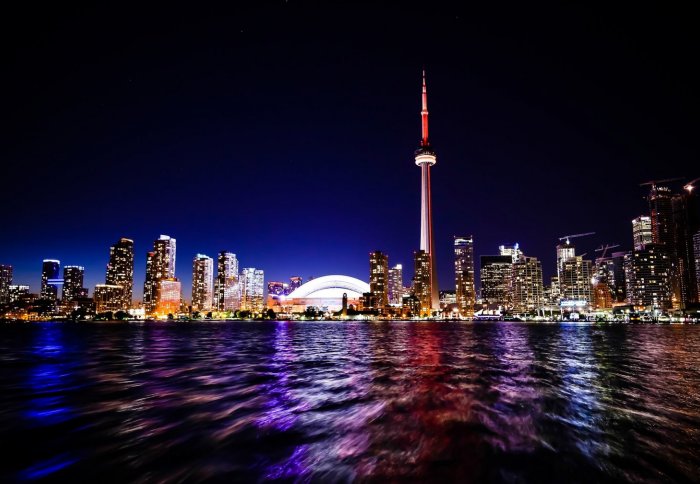
More than 100 alumni, friends and offer-holders celebrated Imperial's fast growing Canadian ties in Toronto this Thursday.
President Alice Gast spoke of Imperial’s pride in its strong Canadian connections at the city’s Gardiner Museum.
Until Imperial, I had never been surrounded by so many motivated, curious and engaged people
– Anna King
MSc Sustainable Energy Futures 2013
Within the past five years, Imperial researchers have co-authored more than 1,800 papers with Canadian collaborators: that is more per capita than with the United States, and makes Canada one of Imperial’s top 10 collaborating countries, Professor Gast explained.
In an interview with the Globe and Mail, published Friday, Professor Gast spoke about Imperial’s openness to Canadian collaboration and to international talent. “It is so important that we keep our doors open and that our international students and scholars feel welcome,” she said.
Imperial’s 1,700 alumni from Canada include electronic music pioneer Dan Snaith AKA Caribou (PhD Mathematics 2005), astronaut and current Transport Minister Marc Garneau (PhD Electrical Engineering 1973), and Olympic skier and business leader Emily Brydon (MBA 2012).
At the event, President Gast picked out recent research highlights for the group, including contributions to the Cassini mission to Saturn – where Imperial pioneered and runs the magnetometer, helping find water on Enceladus – as well as the College’s interdisciplinary work to tackle antimicrobial resistance.
Dynamic environment
Toronto-based graduates Anna King (MSc Sustainable Energy Futures 2013) and Dhivesh Gungaram (Aeronautical Engineering 2015) attracted a lot of new interest in the alumni network in Ontario, when they ran a popular event for the 2017 Alumni Weekend Global Celebrations. They are now exploring future activities, including research gatherings and pub quizzes.

Anna King (right)
Speaking at this week’s Toronto event, Anna King said: “What I really valued at Imperial was my classmates – until that point I had never been surrounded by so many motivated, curious and engaged people. It was a really dynamic environment to be in. I’m excited to continue that atmosphere through the Toronto alumni community.”
Maxim Spivak (MBA 2006) also learnt a lot from his peers, working across disciplinary boundaries to help Imperial engineers commercialise their research. He appreciated that “great companies came to campus, like BP who paid for a group of us to go to Beijing during our course”.
Umar Munir (MSc Mechanical Engineering 1996) came to Imperial from Pakistan. He relished the chance to work with “the world’s best professors in combustion.” Since graduating, “having an Imperial degree – a world top ten university - has opened doors for me”.
Future stars
Several offer-holders took the chance to meet alumni ahead of their moves to London.
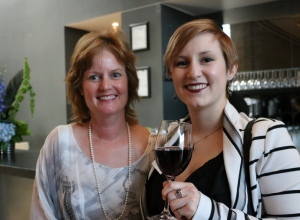
Emily Pepper (right) with her mother
They included Emily Pepper, who will start an MSc after a brilliant performance in her undergraduate degree at the University of Ottawa and a series of international internships connected with her enthusiasm for cutting-edge composite building materials.
Emily is “looking forward to being close to everything in London, taking the tube and being nearer to Europe”. She wants to take advantage of Imperial’s startup culture and access to London’s entrepreneurial scene, as well as the College’s world-leading academics.
An avid collector and proud owner of 210 tins of tea, Emily is well-prepared for England’s tea-drinking culture. She also looks forward to enjoying “a proper English pint”.
Athlone Fellows reunite
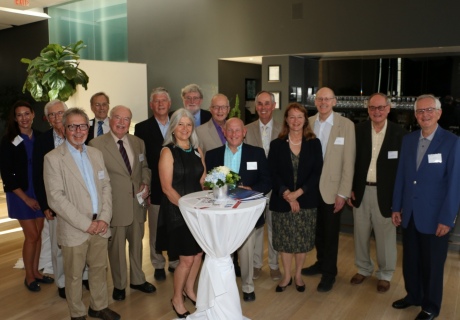
Athlone Fellows gather
The Toronto event brought together a large group of Athlone Fellows for the first time in decades.
Between 1951 and 1970, Imperial’s special relationship with Canada took a step-change as the Athlone Fellowship scheme gave top Canadian engineers the chance to work or study in the UK. Of the 810 winners of Athlone Fellowships, more than a third – 304 Fellows – elected to study at Imperial.
About 20 Athlone Fellows gathered for a special pre-event reception with President Gast. Alumnus and Athlone Fellow Dr Gary Elfstrom (PhD Aeronautics 1971) convened the group after many months of research and investigation to uncover contact details for those who won a place on the programme.
Reflecting on his motivations, Dr Elfstrom said: “The Athlone Fellowship programme generously provided an amazing opportunity for graduate Canadian engineers fresh out of school to work and study abroad. Completing my award at Imperial and staying on to complete my PhD gave me professionally some of the best years of my career. I would like to celebrate this memory with other like-minded Athlones while we are still able to do so.”
Imperial and Athlone meant a lot to me
– Dr Murray Clamen
PhD Civil Engineering, 1973
Dr Murray Clamen (PhD Civil Engineering 1973) was among the “last of the Althlones”, winning his fellowship in 1970. He’s “not a reunion type of person”, having avoided high school and undergraduate reunions his whole life, “but something about the Athlone Fellowship struck me... Imperial and Athlone meant a lot to me”.
Dr Clamen has fond memories of a “weekly ritual of playing squash with my supervisor, having lunch, then going to the museums in South Kensington to think about ideas unrelated to my research”. More importantly, going to Imperial “probably encouraged me to hurry up and get married”.
The Fellowship and Imperial connection “opened doors, including with Marc Garneau, another Athlone – who lived down the road from me in London and later worked with me when he headed the Canadian Space Agency,” said Dr Clamen.
Neil Mackenzie (Mechanical Engineering 1967) loved making friends with locals “who would take me to English country pubs”. He attributes his later career success to Imperial: “It changed my life – Imperial was a quantum turning point for me. I met people from all over the world and got to see London, the whole UK and continent.”
Professor John Riordan (Electrical Engineering 1967, PhD 1965) recalled seeing the old Imperial Institute – apart from the Queen’s Tower – being pulled down “by a chap standing on a wall with a sledgehammer”. He and Dr Ian Rowe (PhD Electrrical Engineering 1967), another Athlone, reminisced about Imperial’s old Paternoster: a mildly terrifying elevator in constant motion where visitors to the Biochemistry Building would hop in and out of the doorless lift as it moved between floors.
See a slideshow of images from the evening below, or check out the album on Facebook.
Article text (excluding photos or graphics) © Imperial College London.
Photos and graphics subject to third party copyright used with permission or © Imperial College London.
Reporter
Andrew Scheuber
Communications Division

